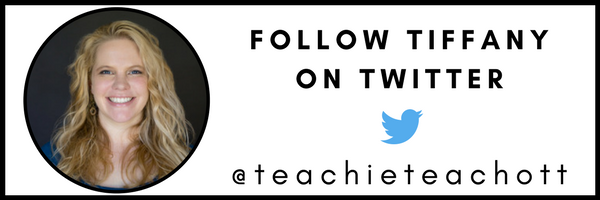In this post:
- What really matters in learning – and why we so often miss it
- Please, don’t use the butterfly method or impose death-by-grammar-worksheets
- How to move from “What” to “Why”
- 3 ways you can make the shift right now
Picture this – you are sitting in your next staff meeting and the district has brought in someone to run a professional development session. After introducing themselves, they say:
“It is important for students to understand the WHY behind what they are learning.”
“Um, yea. I know,” is a thought that might cross your mind. In fact, I don’t know a single teacher that would flat out deny any truth in this statement. But when the metal meets the road and we get into the nitty-gritty of day to day teaching, focusing on “Why?” instead of “What?” can seem impossible.
It saddens me every day when I can see, clear as day, the unintended consequences of “What” thinking. It has become my cause, my drive, the thought that consumes my lesson planning. Everything I do is to take my students from “What” to “Why.” And it is a hard journey when they have been so well trained for years to go in the opposite direction. But this focus on “What” is something we just can’t be satisfied with – we have to change what we are doing.
If we want to give these kids the very best start to what they will be asked to do in 2, 4, 10 years, we have to go beyond tricks and into meaning. Click To TweetLet’s think about a few of these all-too-common scenarios:
The Dreaded Butterfly Fractions
Students in 4th grade are learning how to add and subtract fractions. The curriculum their teacher uses does a nice job of representing the concept behind the procedure, but it is clear that the students are struggling. Nearing the administration of the district ordained common assessment, their teacher reaches out to the awesome professional learning network she has built and asks, “How can I help them understand?!” Not one to leave a colleague in a bind, a fellow teacher comes to the rescue with a demonstration of the butterfly method. Next thing you know, this well-meaning teacher shows the butterfly method to her students and they immediately begin answering fraction addition questions correctly.
Win, right?
Wrong.
[Scroll down to keep reading]
The kids sitting in that class have no better understanding of fraction addition than they did before they learned the trick. They now simply know a trick. Tricks are cute – for dogs. If we want to give these kids the very best start to what they will be asked to do in 2, 4, 10 years, we have to go beyond tricks and into meaning.
That child sitting in class learning to draw a butterfly to add does not actually understand why fraction addition works the way it does. This means that when they get into higher math – where fractions can now randomly have variables in them – their understanding begins to break down. When they are asked to USE an understanding of the concept, their butterflies fall to pieces – and so do the students.
Death By Grammar
Another example, this time from the ELA world. Anyone remember those tedious, painful, confusing, and this-feels-like-an-epic-waste-of-time grammar worksheets from their childhood? Perhaps it was just me, but I swear I broke out into a cold sweat every time one of those crossed my 6th-grade desk. Every day, every worksheet, every moment of grammar instruction I ever received was about “What,” not “Why.”
Perhaps I could have embraced the participles and gerunds if anyone had bothered to have shown me why they mattered. Maybe I would have cared about the content if someone, in their efforts to teach me how to communicate effectively through writing, had shown me how an appositive phrase, used at the precisely correct moment, can take a sentence in an entirely different direction.
It was not until I was an adult that I realized why on earth grammar ever mattered in the first place. I stumbled upon the truth that the way we combine words, much like mixing a cupcake batter or reactants in a chemical demonstration, impacts the end results. I discovered how words, well crafted, could be used to persuade and entice an audience to think differently about an idea.
That is one heck of a “Why!”
Moving from “What” to “Why”
Entertain the possibility, right now, that you may be far too focused on “What” in your own classroom. If so, it’s time to reverse course and shift gears. Take a few minutes to think about what is coming up in your lesson plans this week or reflect on what you just finished teaching. Are you teaching tricks and facts? Or understanding and meaning? Reflection is one of the most important skills we have as educators. We cannot hope to change how our students learn if we don’t take the time to look in that mirror and identify where we might be going wrong.
For more concrete, ready to implement strategies, check out my next post: 3 Ways to Focus on the “Why” and Not the “What” – Building Deeper Meaning in Learning.
About Tiffany Ott
Tiffany Ott is the Director of Curriculum Development with the Teach Better Team, a high school math teacher in Ohio, the founder of #MasteryChat, and an educational technology fanatic. She just can’t get enough of teaching and learning!
Whether it’s connecting with a teacher struggling to make mastery learning work, writing about education, designing units, or speaking up on a stage to teachers who want to change the world with awesome teaching, she is hooked on all things education.




